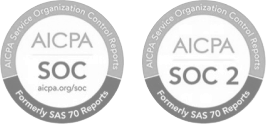Hybrid Workspace
Article Navigation
A Hybrid Workspace is a flexible work arrangement that blends remote and in-office work. It enables employees to divide their time between physical offices and remote environments based on organizational needs, personal preferences, and the nature of their tasks. The hybrid workspace model aims to balance flexibility, productivity, and collaboration, providing benefits for both employees and employers while adapting to modern work demands.
Hybrid workspace is not a single fixed format – it is an evolving approach designed to optimize performance, engagement, and efficiency across diverse teams and industries.
Common Hybrid Models
Hybrid work can take various forms depending on organizational goals, team structures, and job requirements:
- Fixed Hybrid Model: Specific roles or teams are permanently assigned to either remote or onsite work.
- Flexible Hybrid Model: Employees have the autonomy to choose where and when they work, within set guidelines.
- Office-First Model: Work is primarily in-office, with remote options available for certain days or circumstances.
- Remote-First Model: Remote work is the default, with physical office use primarily for collaboration or specific needs.
Benefits of Hybrid Work
For Employees
- Flexibility: Ability to balance personal and professional needs.
- Work-Life Balance: Reduced commuting and more control over work schedules.
- Well-being: Improved job satisfaction through autonomy and choice.
- Cost Savings: Reduced commuting, meals, and other work-related expenses.
For Employers
- Talent Access: Broader recruitment pool beyond geographical constraints.
- Operational Efficiency: Reduced office space and related overhead costs.
- Productivity Gains: Flexibility fosters employee engagement and performance.
- Employee Retention: Higher satisfaction and morale increase loyalty.
Challenges of a Hybrid Workspace
- Communication Barriers: Remote work can hinder spontaneous collaboration and information sharing.
- Equity Issues: Ensuring equal access to opportunities and visibility for all employees.
- Employee Engagement: Maintaining team cohesion and inclusion across locations.
- Technology and Security: Ensuring reliable infrastructure and protecting sensitive data.
Best Practices for a Successful Hybrid Model
- Clear Policies: Define expectations, availability, and responsibilities.
- Technology Enablement: Invest in collaboration and communication tools.
- Inclusive Culture: Ensure remote and onsite employees have equal access to resources and opportunities.
- Regular Communication: Maintain transparency and frequent check-ins.
- Employee Well-being: Monitor workload and work-life boundaries to prevent burnout.































 Back
Back